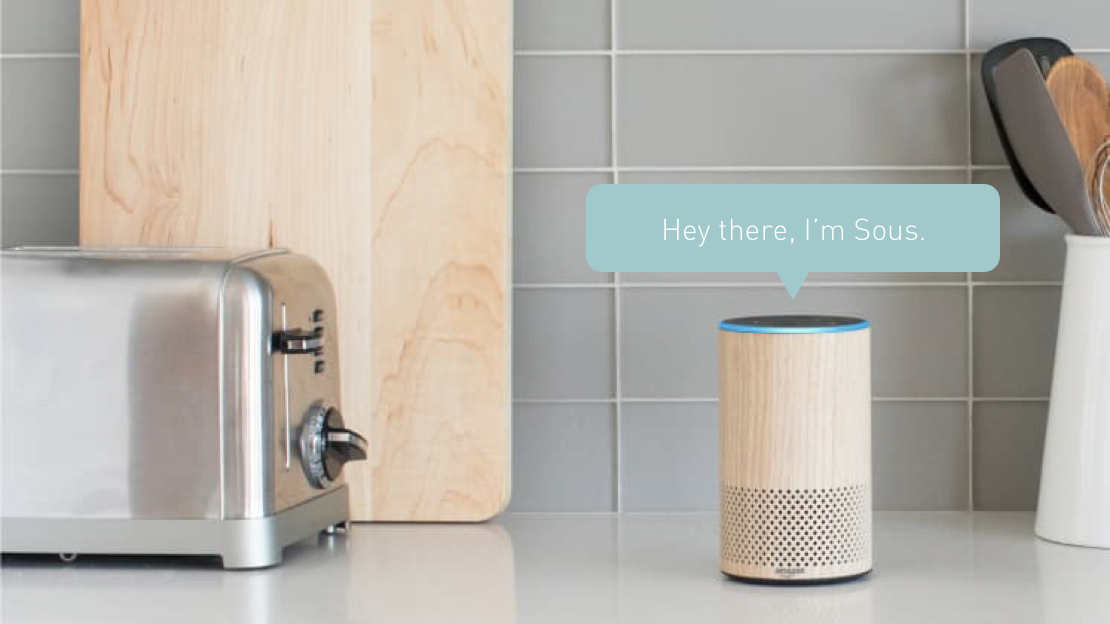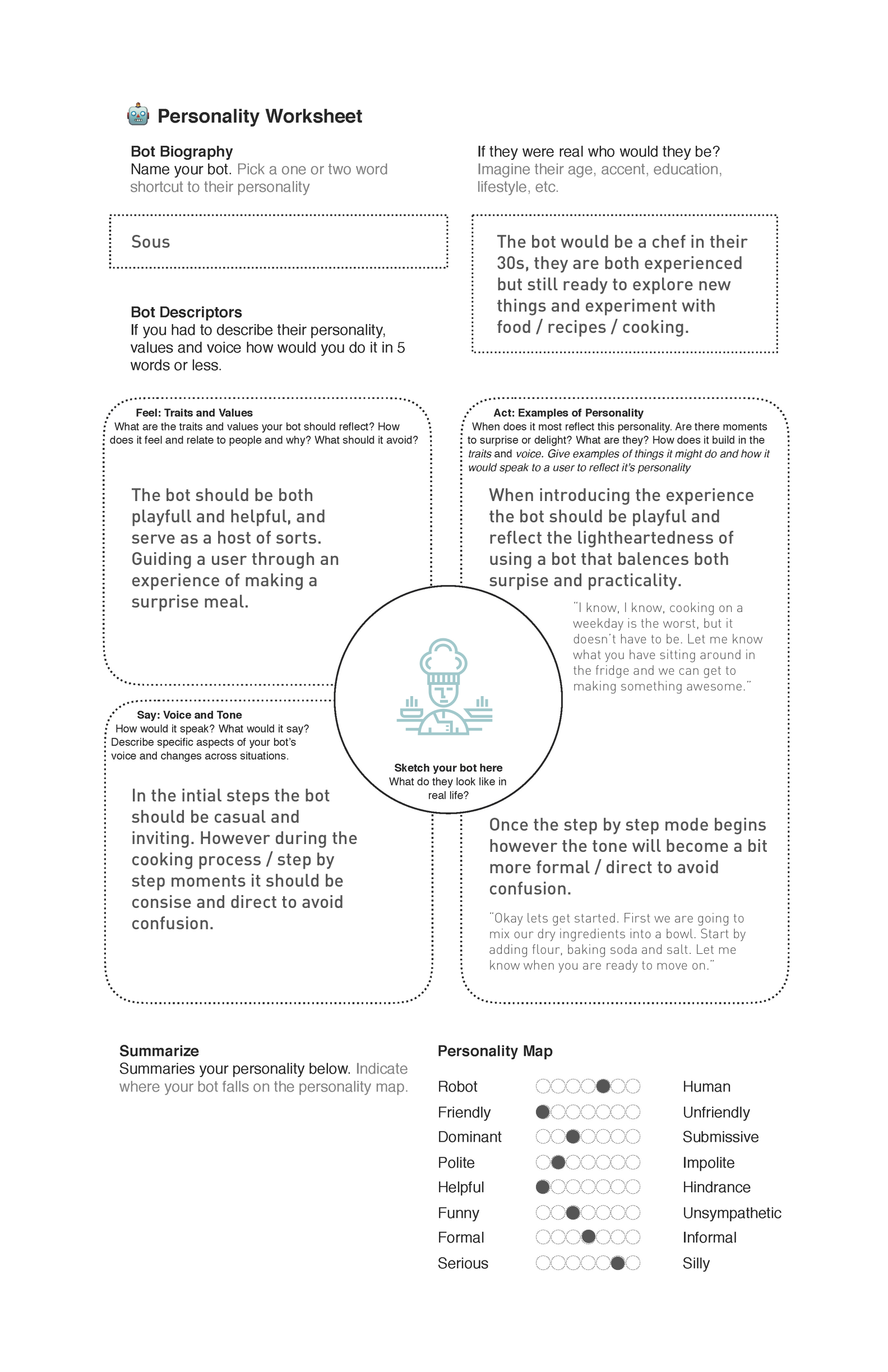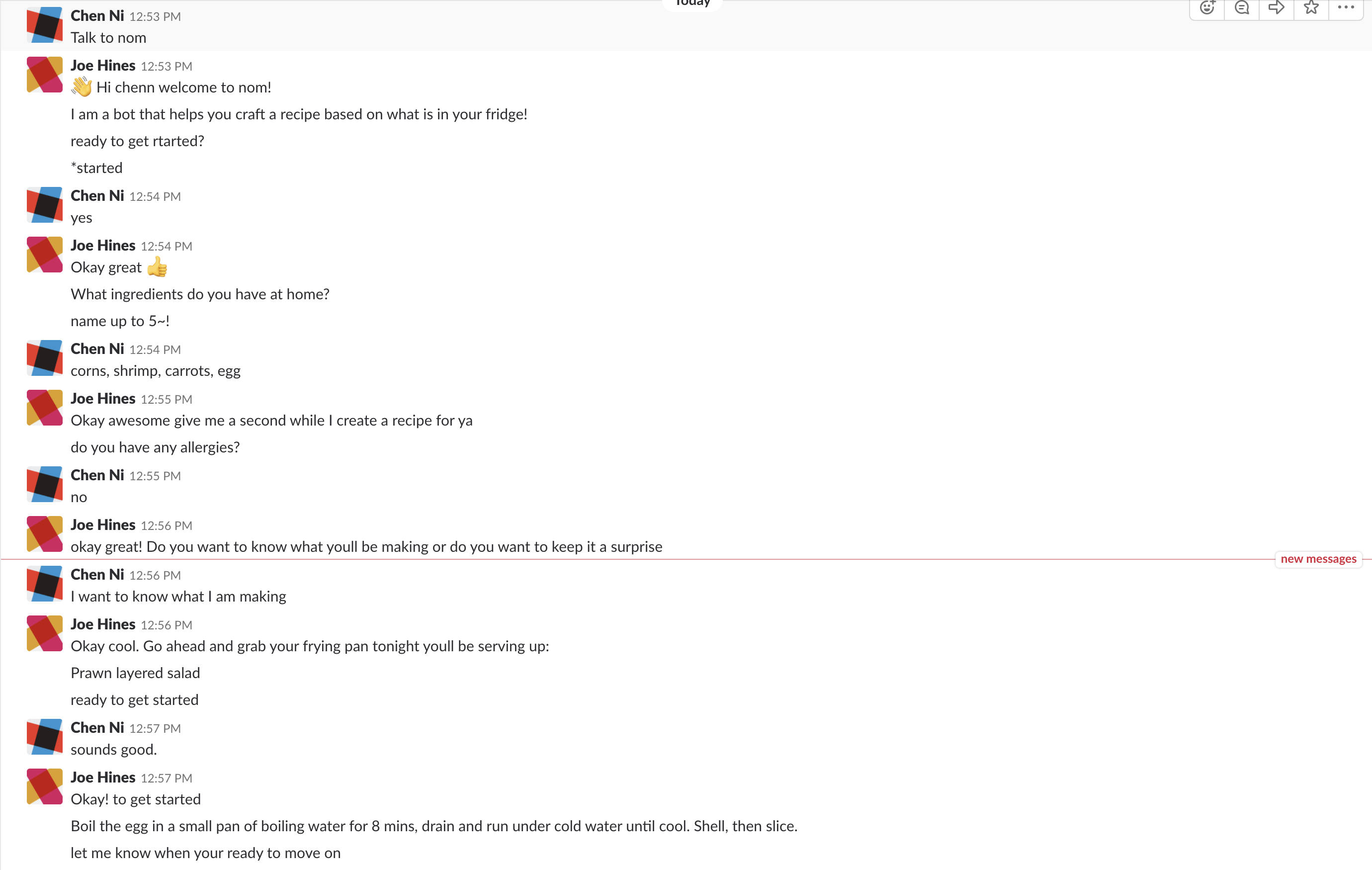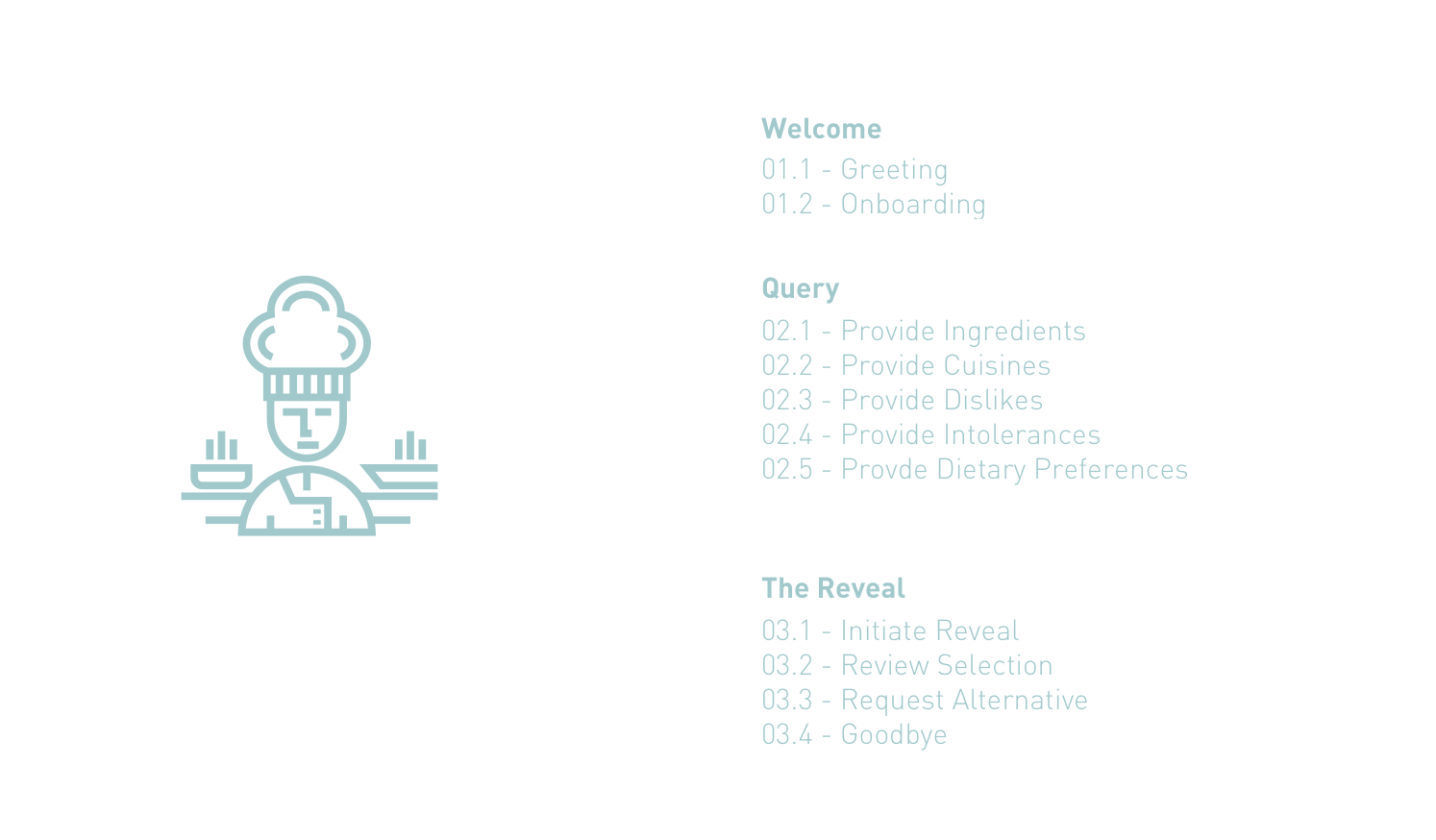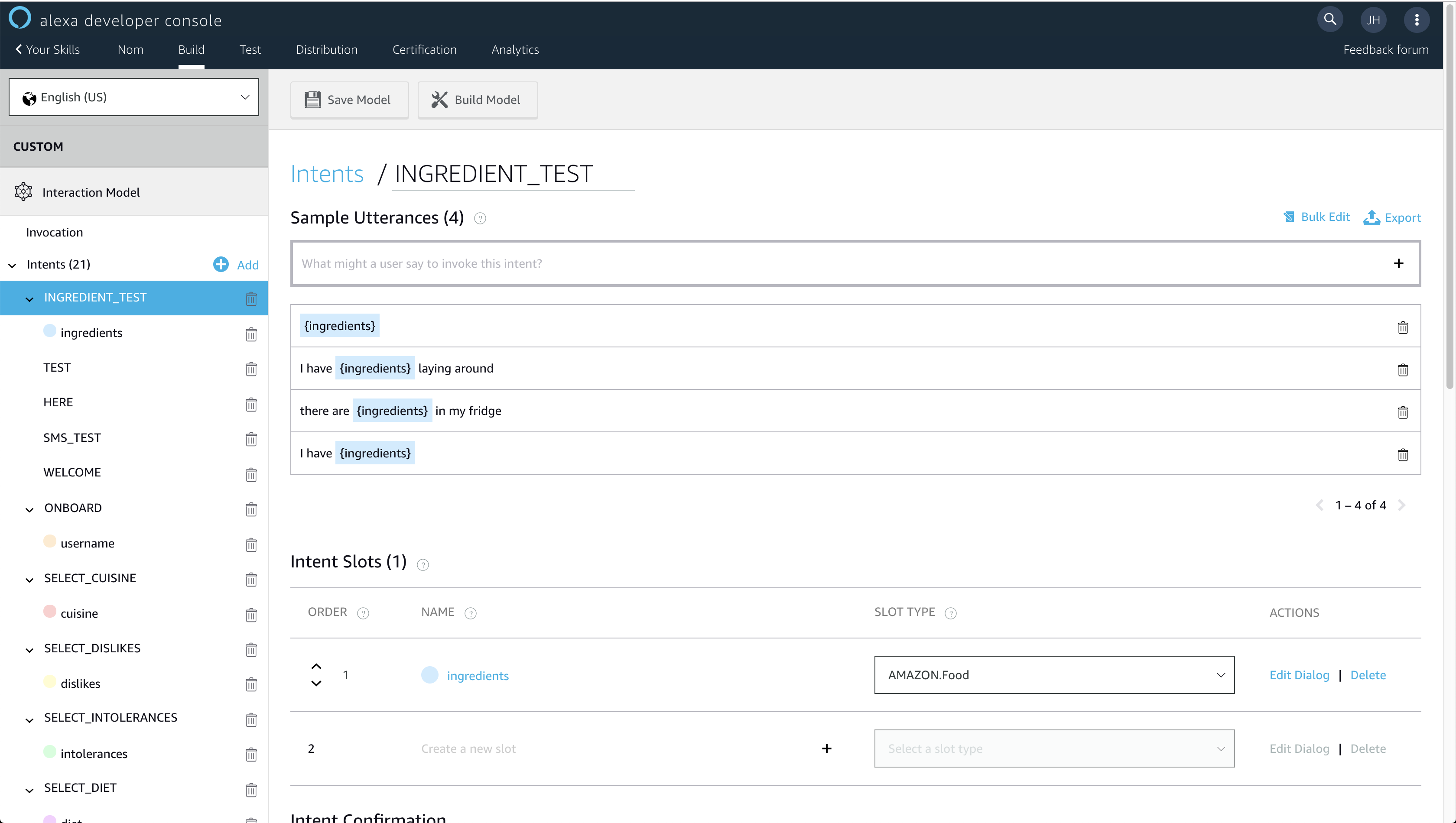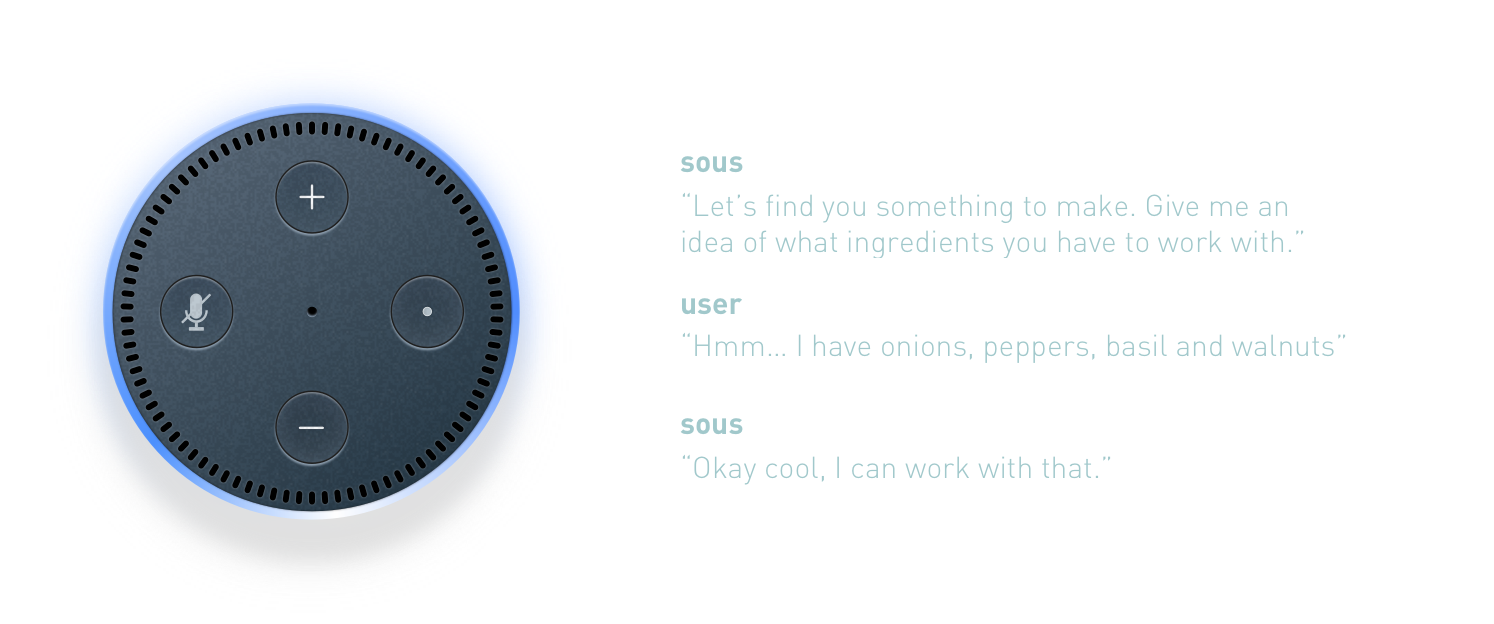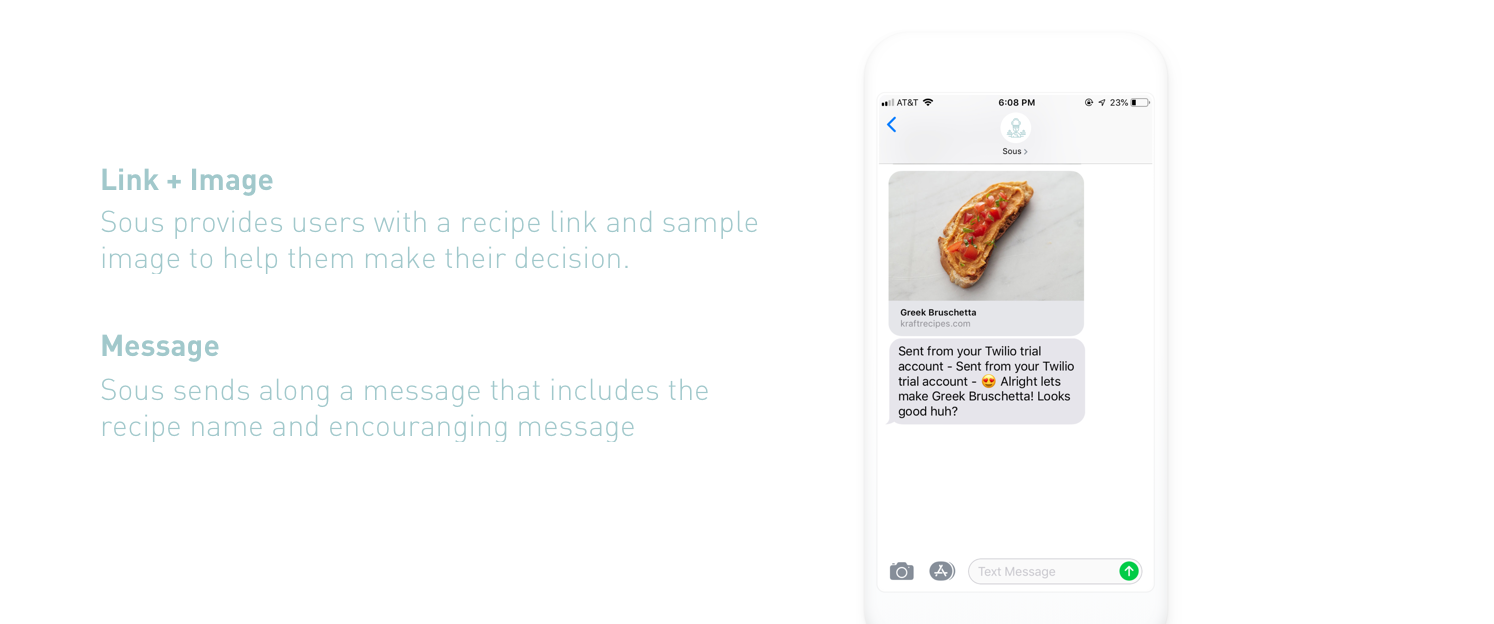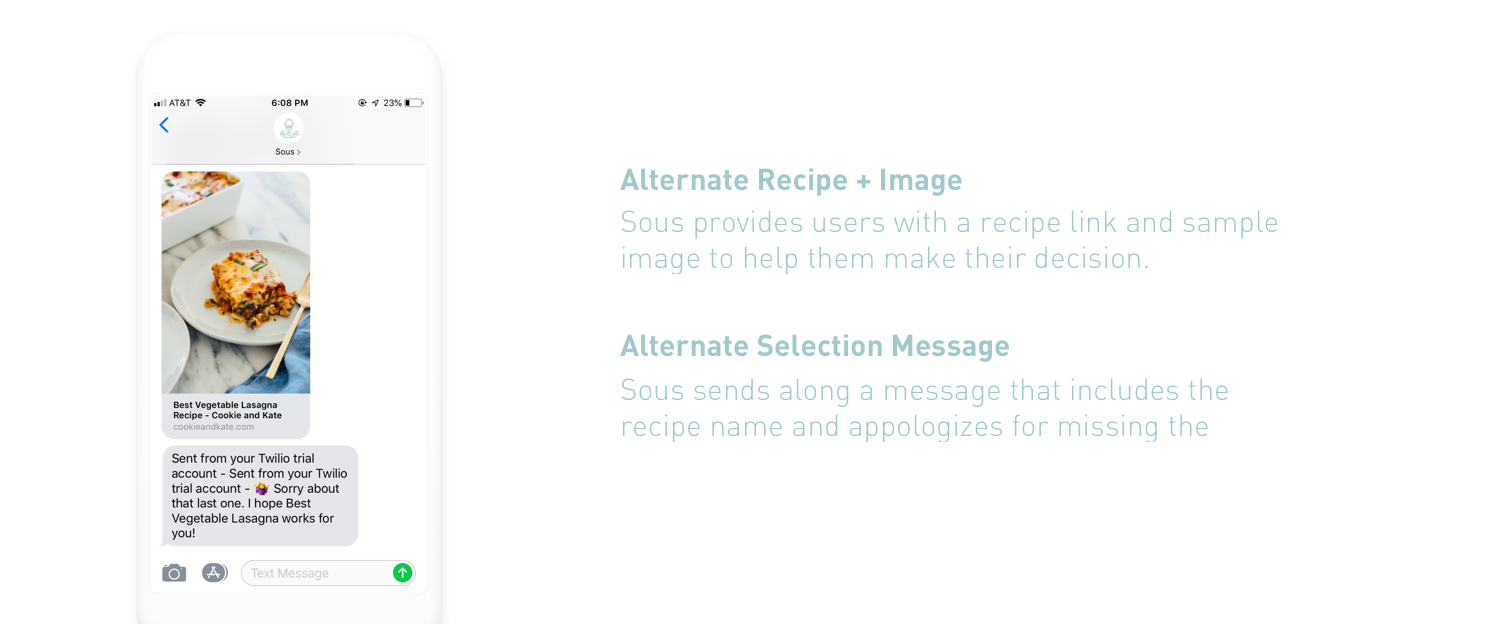Intention
Voice assistants like Amazon's Alexa have continued to show that they are well suited for our kitchens. These task-based voice user interfaces give users the ability to easily surface step by step walkthrough of recipes set timers all without the use of a user's hands. That said, these experiences focus on the delivery of a recipe that has been preselected by a user, but I what if a user could search and discover new recipes through a conversation with a virtual agent as well?
Sous stands to do just that. While speaking with Sous user respond to a series of questions about their preferences, tastes, desires, allergies and perhaps most importantly, the ingredients they have available at the moment. Sous collects this information and crafts a recipe that meets the user's tastes and needs.
